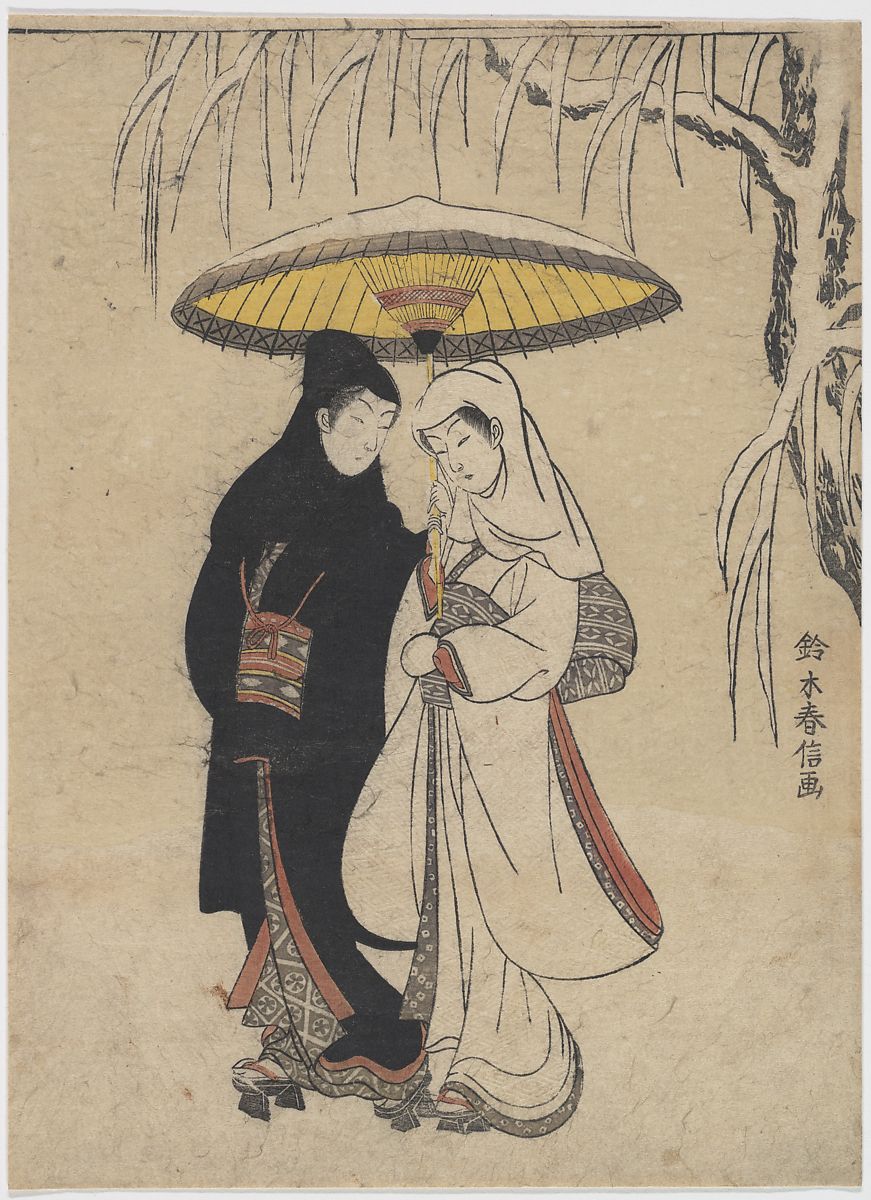Title: Lovers walking in the Snow (Crow and Heron) Artist: Suzuki Horunobu (Japanese, 1725–1770) Period: Edo period (1615–1868) Date: 1764–72 Medium: Polychrome woodblock print; ink and color on paper, with embossing (karazuri) Dimensions: H. 11 1/4 in. (28.6 cm)

Full description
This woodblock print by Suzuki Harunobu depicts a couple on their Michiyuki walk which would have been their last walk together as well as the actual journey to the place they will commit shinju. The umbrella or ai ai gasa which they are walking under represents their deep devotion to one another even in the face of death to continue their love for one another in the afterlife. Some interesting notes are that the two subjects are shown as equals which was very uncommon hence the culture during Edo period Japan made women almost like property. In addition the color scheme and garments have significant meaning portrayed in a subtle manner. The garments themselves including the headdresses look like traditional buddhist wedding garbs. Which creates an interesting juxtaposition knowing they will die yet it is a joyous occasion at the same time. Also the buddhist references also mean that the color white represents death and spiritually and physically they are both defying cultural norms set by the largely Neo Confucius shogunate at the time. Lastly, the winter scene can be interpreted as an allegory for death and also the first stage of shinju before they are reborn into the afterlife via the imagery of death as winter and rebirth as spring.
Comments
to view and add comments.
Annotations
No one has annotated a text with this resource yet.
- typeImage
- created on
- file formatjpeg
- file size202 kB


